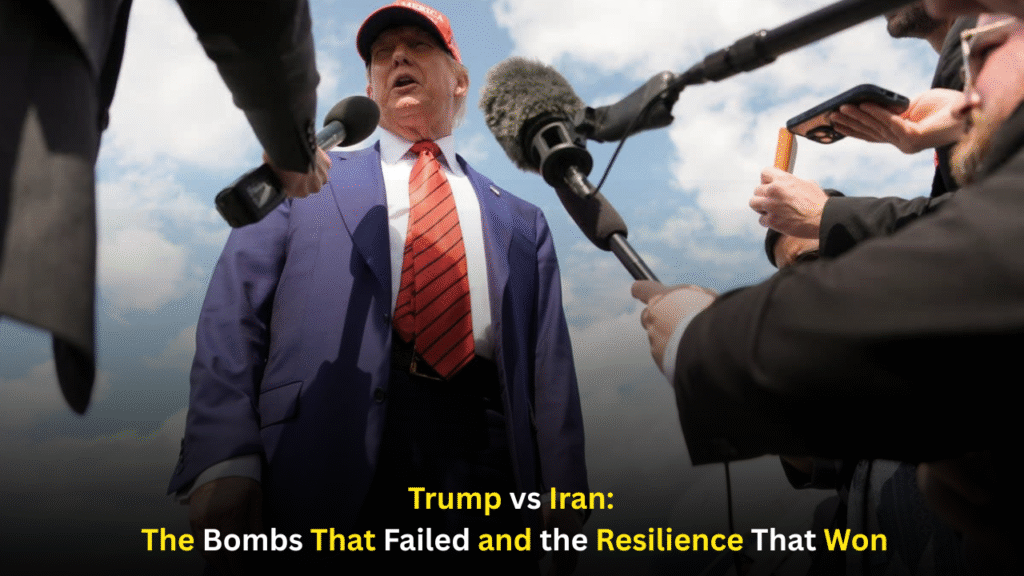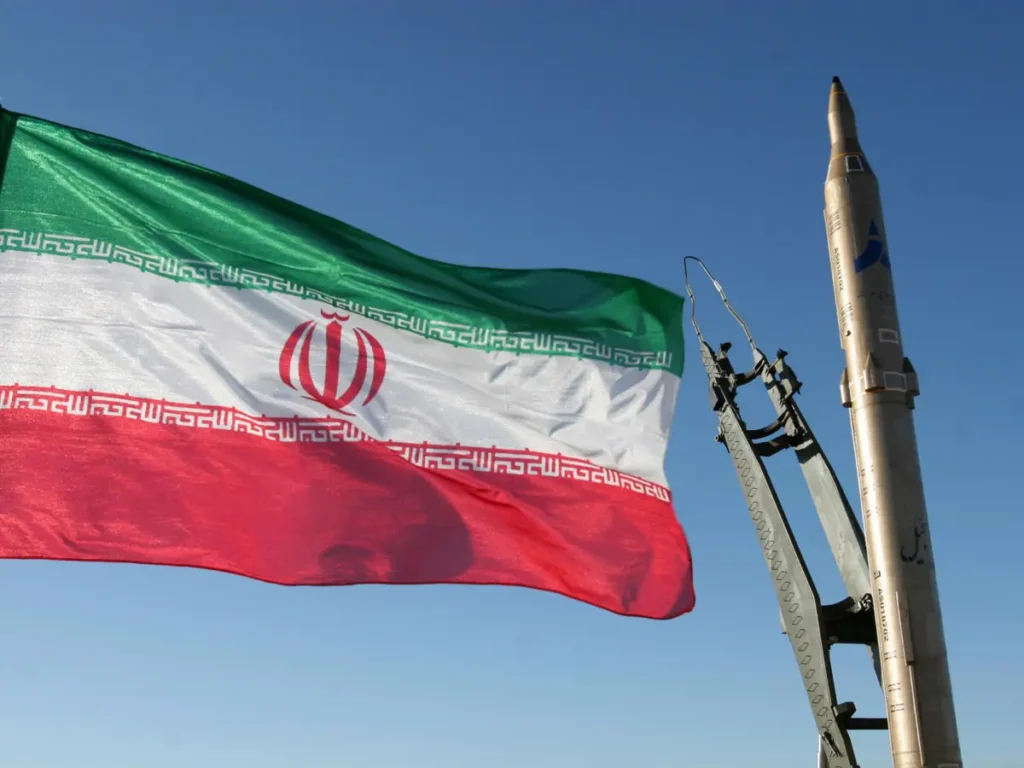
Trump Iran Bombing Report
Trump Iran Bombing Report : Despite multiple high-profile bombings and years of aggressive policy under Donald Trump’s presidency, a shocking new American intelligence report reveals that Iran’s strategic capabilities, especially its nuclear and military programs, remain largely unaffected. The findings contradict the Trump administration’s public narrative that portrayed Iran as severely weakened.
This blog explores in depth what the report says, how Iran maintained its resilience, why the Trump administration failed to dismantle Iran’s core defense systems, and what this means for Middle Eastern geopolitics.
1. Background: Trump’s Maximum Pressure Campaign
After withdrawing from the Joint Comprehensive Plan of Action (JCPOA) in 2018, Trump launched a “maximum pressure” campaign involving:
- Economic sanctions
- Cyber attacks
- Assassinations (e.g., General Qassem Soleimani)
- Strategic bombings on Iranian facilities
The goal was simple: to cripple Iran’s economy and military strength, thereby forcing Tehran to negotiate a new nuclear deal on U.S. terms.
But what really happened?
2. What the U.S. Intelligence Report Says (2025 Edition)
A declassified intelligence assessment leaked in June 2025 has shed light on:
- The limited effectiveness of U.S. bombings on Iran’s nuclear infrastructure.
- Iran’s use of deep underground facilities and decoys.
- Cyber countermeasures developed by Iran to neutralize U.S. surveillance.
- Increased domestic military production to replace damaged infrastructure.
Key Findings:
| Metric | Trump Claims | Intelligence Report |
|---|---|---|
| Nuclear Capability | Severely Damaged | 85% Remains Operational |
| Missile Sites Destroyed | 40+ | Only 12 Validated |
| Civilian Damage | Minimal | 250+ Civilian Casualties |
| Iran’s Morale | Broken | Nationalism Increased |
| Sanctions Effectiveness | Crippling | Workarounds via China & Russia |
3. Why Iran Survived the Bombings
 A. Use of Deep, Reinforced Bunkers
A. Use of Deep, Reinforced Bunkers
Iran anticipated aerial bombings and built its nuclear sites deep underground — in some cases over 80 meters deep, which made them immune to bunker-buster bombs.

 B. Advanced Camouflage and Decoy Systems
B. Advanced Camouflage and Decoy Systems
Iran successfully fooled U.S. satellites by:
- Placing dummy missile launchers in visible areas.
- Creating decoy nuclear facilities to absorb attacks.
- Continuously relocating mobile units.
 C. Cyber Resilience
C. Cyber Resilience
In response to Stuxnet and other cyberattacks:
- Iran invested in indigenous firewall technologies.
- Developed AI-driven threat detection.
- Worked with Chinese and Russian cybersecurity firms to plug vulnerabilities.
4. What Went Wrong with Trump’s Strategy?
Despite spending billions and risking global escalation, the Trump administration failed to:
- Understand Iran’s internal capabilities.
- Account for proxy responses across Iraq, Syria, and Lebanon.
- Build international consensus, isolating the U.S. diplomatically.
 Strategic Mistakes
Strategic Mistakes
- Overreliance on military might rather than diplomatic tools.
- Misreading Iran’s resilience and regional alliances.
- Underestimating backlash from American allies in Europe and the Middle East.
5. Iran’s Counter Strategy: Patience and Planning
Iran adopted a long-game strategy:
- Avoided direct war but increased proxy activity.
- Maintained diplomatic channels with Europe, China, and Russia.
- Focused on economic resilience, barter trade, and cryptocurrency-based exports to bypass sanctions.
 Sanctions But No Surrender
Sanctions But No Surrender
- Iranian oil exports dropped initially but recovered through grey markets.
- Currency devalued but the black market stabilized demand.
- Public morale strengthened due to anti-American sentiment and religious nationalism.
6. Regional Reactions and Global Implications
 Israel:
Israel:
- Upset over report’s revelation that Iran’s nuclear threat remains real.
- Increased lobbying in Washington to take a tougher stance post-Trump.
 Saudi Arabia:
Saudi Arabia:
- Skeptical of U.S. commitment to counter Iran.
- Accelerated own nuclear ambitions as a hedge.
 Europe:
Europe:
- Vindicated in criticizing Trump’s JCPOA withdrawal.
- Pushing Biden for renewed nuclear deal diplomacy.
 China & Russia:
China & Russia:
- Profited by stepping in as Iran’s economic and tech partners.
- Expanded influence in the Gulf region.
7. Biden’s Quiet Shift: Acknowledging the Past Mistakes
The Biden administration, according to insiders, is now:
- Re-engaging with Iran through backchannel diplomacy.
- Discussing a JCPOA 2.0, which includes missile limitations and regional proxy controls.
- Avoiding public embarrassment by not commenting directly on the report.

8. Media Coverage: The Contradiction Game
Right-wing media in the U.S. called the report “biased” and “deep state manipulation.” However, mainstream media such as The Washington Post and New York Times validated the findings with their independent sources.
Meanwhile, Iranian state TV glorified the report as proof of “Islamic resistance defeating Western aggression.”
9. Public Sentiment in the U.S. and Iran
 American Citizens:
American Citizens:
- Mixed reactions. Some feel betrayed by false victory claims.
- Veterans express frustration over unclear goals and repetition of Iraq-Afghanistan-style strategies.
 Iranian Citizens:
Iranian Citizens:
- Government used the report to boost national morale.
- Propaganda emphasized Iran’s technological superiority and survival against a superpower.
10. Lessons for Future Military Strategy
- Technology ≠ Victory: Superior weapons don’t guarantee strategic wins.
- Psychological Warfare Matters: Iran used U.S. attacks to unify its population.
- Economic Sanctions Have Limits: Especially when adversaries have global partners.
- Diplomacy Trumps Aggression: Smart dialogue beats brute force in the long term.
11. What Happens Next?
- Talks may resume, but trust is at an all-time low.
- Iran may accelerate uranium enrichment as leverage.
- Regional tensions will likely remain high, with Yemen, Lebanon, and Iraq as flashpoints.
Conclusion: A Tale of Misjudgment and Miscalculation
The Trump Iran Bombing Report exposes the gap between public rhetoric and ground reality. Iran, despite being bombed and sanctioned, has not only survived but strategically maneuvered itself into a stronger position regionally and globally.
The real question now is: Will the U.S. learn from its past, or repeat the cycle under new leadership?



